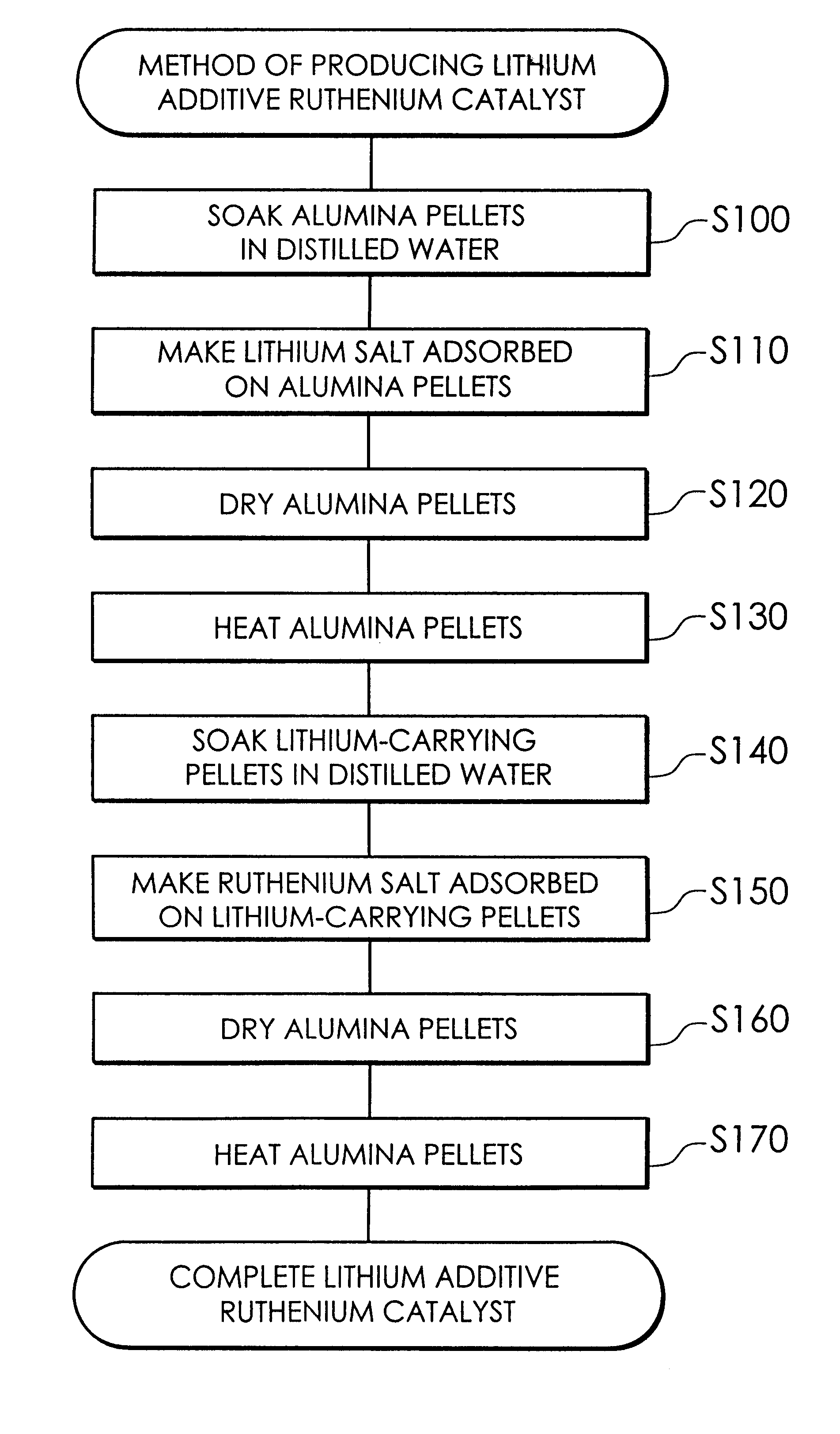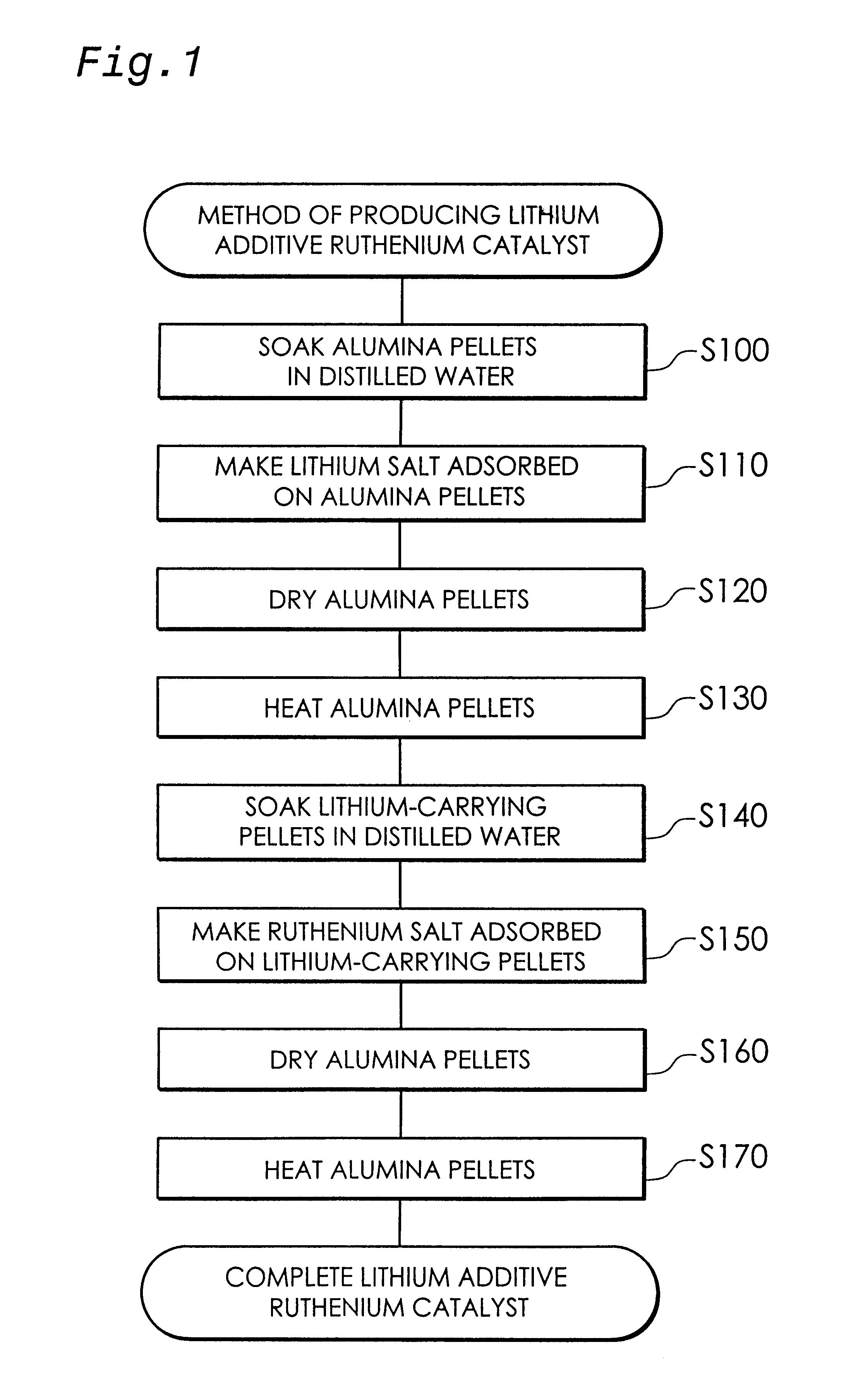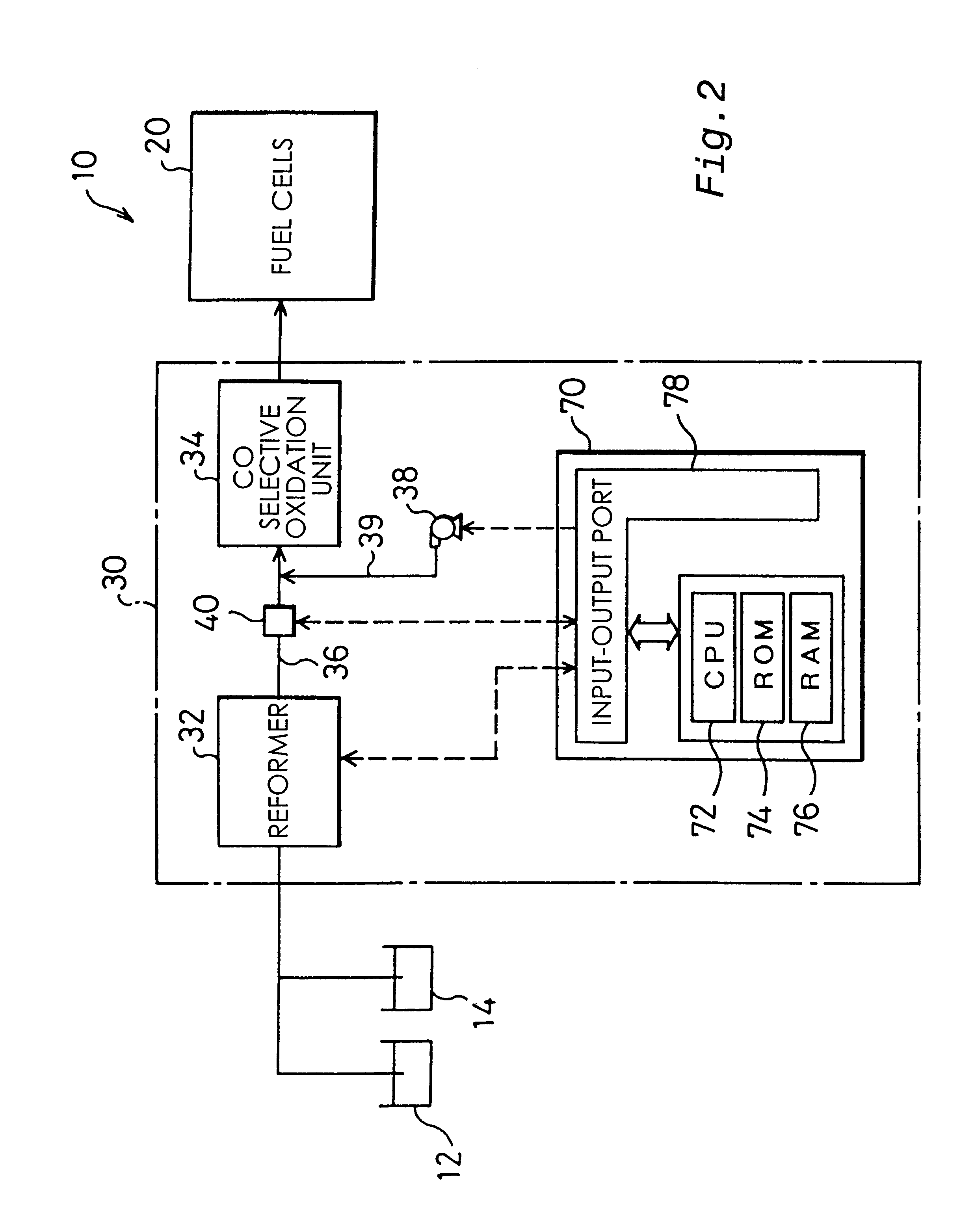Apparatus and method for reducing carbon monoxide concentration and catalyst for selectively oxidizing carbon monoxide
a technology of carbon monoxide and carbon monoxide, which is applied in the direction of metal/metal-oxide/metal-hydroxide catalyst, machine/engine, etc., can solve the problems of carbon monoxide, deteriorating the catalytic ability, and lowering the performance of the fuel cell
- Summary
- Abstract
- Description
- Claims
- Application Information
AI Technical Summary
Benefits of technology
Problems solved by technology
Method used
Image
Examples
Embodiment Construction
The present invention provides a first carbon monoxide concentration reduction apparatus that oxidizes carbon monoxide included in a hydrogen rich gas and thereby reduces the concentration of carbon monoxide. The first carbon monoxide concentration reduction apparatus includes: a hydrogen rich gas supply unit that feeds a supply of the hydrogen rich gas; an oxidant gas supply unit that feeds a supply of an oxygen-containing oxidant gas which is used to oxidize carbon monoxide; and a carbon monoxide selective oxidation unit that includes a carbon monoxide selective oxidation catalyst, receives the supply of the hydrogen rich gas fed from the hydrogen rich gas supply unit and the supply of the oxidant gas fed from the oxidant gas supply unit, and selectively oxidizes carbon monoxide included in the hydrogen rich gas through a carbon monoxide selective oxidation reaction for selectively oxidizing carbon monoxide, wherein the carbon monoxide selective oxidation catalyst accelerates the ...
PUM
| Property | Measurement | Unit |
|---|---|---|
| temperature | aaaaa | aaaaa |
| temperature | aaaaa | aaaaa |
| temperature | aaaaa | aaaaa |
Abstract
Description
Claims
Application Information
 Login to View More
Login to View More - R&D
- Intellectual Property
- Life Sciences
- Materials
- Tech Scout
- Unparalleled Data Quality
- Higher Quality Content
- 60% Fewer Hallucinations
Browse by: Latest US Patents, China's latest patents, Technical Efficacy Thesaurus, Application Domain, Technology Topic, Popular Technical Reports.
© 2025 PatSnap. All rights reserved.Legal|Privacy policy|Modern Slavery Act Transparency Statement|Sitemap|About US| Contact US: help@patsnap.com



